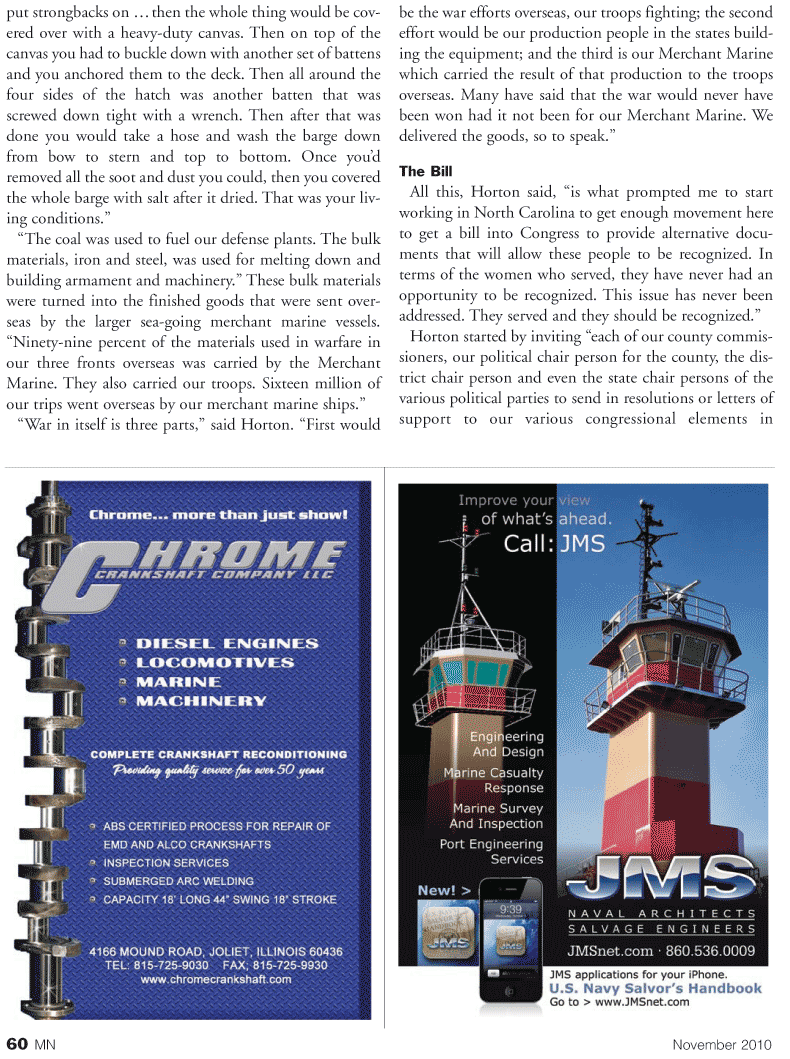
Page 60: of Marine News Magazine (November 2010)
Workboat Annual
Read this page in Pdf, Flash or Html5 edition of November 2010 Marine News Magazine
60 MN November 2010 put strongbacks on … then the whole thing would be cov- ered over with a heavy-duty canvas. Then on top of the canvas you had to buckle down with another set of battens and you anchored them to the deck. Then all around the four sides of the hatch was another batten that was screwed down tight with a wrench. Then after that was done you would take a hose and wash the barge down from bow to stern and top to bottom. Once you’d removed all the soot and dust you could, then you covered the whole barge with salt after it dried. That was your liv- ing conditions.” “The coal was used to fuel our defense plants. The bulk materials, iron and steel, was used for melting down and building armament and machinery.” These bulk materials were turned into the finished goods that were sent over- seas by the larger sea-going merchant marine vessels. “Ninety-nine percent of the materials used in warfare in our three fronts overseas was carried by the Merchant
Marine. They also carried our troops. Sixteen million of our trips went overseas by our merchant marine ships.” “War in itself is three parts,” said Horton. “First would be the war efforts overseas, our troops fighting; the second effort would be our production people in the states build- ing the equipment; and the third is our Merchant Marine which carried the result of that production to the troops overseas. Many have said that the war would never have been won had it not been for our Merchant Marine. We delivered the goods, so to speak.”
The Bill
All this, Horton said, “is what prompted me to start working in North Carolina to get enough movement here to get a bill into Congress to provide alternative docu- ments that will allow these people to be recognized. In terms of the women who served, they have never had an opportunity to be recognized. This issue has never been addressed. They served and they should be recognized.”
Horton started by inviting “each of our county commis- sioners, our political chair person for the county, the dis- trict chair person and even the state chair persons of the various political parties to send in resolutions or letters of support to our various congressional elements in

 59
59

 61
61
